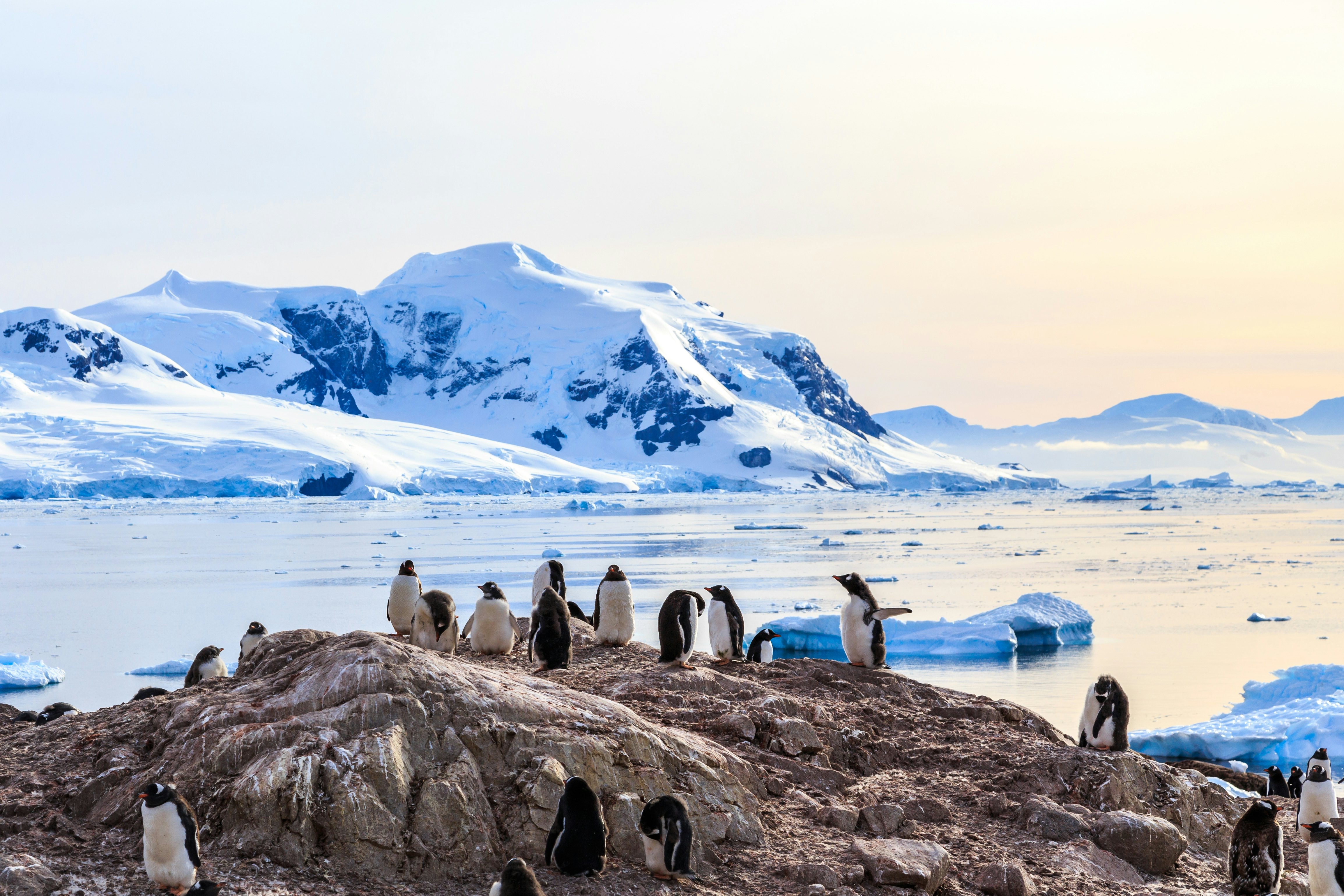

Even travel minimalists can squeeze everything you need to pack for Antarctica into your suitcase © Angela Ballard / Lonely Planet
Glistening, groaning icebergs. Playful Adélie, gentoo and emperor penguins. Sunbathing Weddell seals and spouting sperm whales. Antarctica is the coldest, windiest, driest continent on earth, and for many travelers, the final frontier.
Since the “Heroic Age of Antarctic Exploration” at the end of the 19th century, people have longed to follow in Shackleton’s footsteps and explore this polar desert. Fortunately for modern adventurers, more opportunities than ever are open for tourists to check the most illusive continent on earth off their bucket lists. But to do that, you have to have the right gear.

What to pack for a voyage to Antarctica
Most expeditions to Antarctica are on scientific research vessels that also transport tourists. Unlike a traditional cruise, however, you won’t need fancy formalwear for the dining room. Dress on board is casual and comfortable and, above all else, keeps safety in mind. Ships typically ban any footwear that’s open-toed or high-heeled, but your tuxedo t-shirt will be just fine for penguin theme night.While on board the ship, your best bet is comfortable, layered clothing and slip-resistant shoes for walking the damp decks. Wildlife sightings are a popular pastime at sea, and this is a good opportunity to give your camera and snow gear a test run, since the wind on deck will give you a taste of Antarctic cold. Binoculars come in handy, too, for spotting far-off whales and birds from the boat.
Be prepared for seasickness crossing Drake Passage
Before you step foot on the southernmost continent, you’ll have to brave the Drake Passage. Those who make the crossing frequently will tell you that it’s referred to as the “Drake Shake” or the “Drake Lake,” depending on the swell of the sea. If it’s the former, you’ll want to be prepared with seasickness medicine. This can be pills, patches, wristbands, or a combination thereof; if you’re particularly susceptible, talk with your doctor about prescription medication before you leave home.

Packing for shore excursions in Antarctica
As you approach your first landing, the ship’s crew will check your outdoor wear and camera gear like tripods for any tiny stowaways. Everything will be inspected, vacuumed and brushed to remove foreign particles like dirt and seeds in order to protect Antarctica’s pristine environment.
Getting from your ship to Deception Island, South Shetland Islands, the Falkland Islands and other popular Antarctic landings requires you to ride in an inflatable motorboat.
A waterproof dry bag or backpack like those used by scuba divers is useful for keeping your camera gear dry, and a waterproof pouch on a lanyard will keep your phone secure and handy for quick photos. The extreme cold will drain the batteries in your electronics faster than usual, so bring extras and keep them in an inner coat pocket to benefit from your body heat until you need them.
How to protect yourself in this harsh environment
Sunglasses with a UV filter are essential for exploring in the blinding southerly sunshine — as is sunscreen. Some people bring ski goggles to help combat the wind, particularly if they have prescription lenses. Moisturizer and lip balm are also necessities in the Antarctic atmosphere; because of its low temperatures, the polar air contains only about one-tenth of the water vapor found in temperate latitudes, and your skin will dry out quickly.
While you might be tempted to pack your bulkiest clothes to stay warm, you’ll be better off with layers of moisture-wicking, windproof fabrics. Top these with waterproof snow pants (a requirement for most Antarctic cruises), but don’t tuck them in — that will shovel ice and snow directly into your boots, leaving you with wet socks and cold toes.

Preventing contamination of this pristine environment
Many cruise companies provide guests with rubber boots for shore excursions, largely to prevent contamination of the Antarctic snow and soil. But thin, moisture-wicking socks layered underneath a thicker, warmer pair will keep your toes toasty, particularly if you drop some air-activated heat packets into your boots. The same layering approach works best for your hands, with a thin liner pair of gloves topped with a thick, waterproof pair of ski-type gloves.
A balaclava offers an all-in-one approach for keeping your head warm and your face protected from Antarctic winds, or you can opt for a snug-fitting beanie and a neck gaiter that will fit under the hood of your coat and stay put on quick boat crossings.
Stay warm and dry... except for the polar plunge
Despite freezing temperatures, you should bring a swimsuit. The polar plunge is a fun opportunity to shed your snowsuit and strip to your skivvies for a quick dip in the sub-zero salt water. Once you’re back on board, keep your swimsuit on to take advantage of your ship’s sauna to thaw out from the swim.

How to protect your camera gear in Antarctica
You’re likely to take more photos in Antarctica than many other travel destinations, so make sure your gear is ready. Consider a rubber housing to protect your camera body, a rain sleeve to keep out snow and spray, and a lens hood to help combat the icy glare. An external hard drive will help free up space on memory cards, and a power strip comes in handy for charging all your devices simultaneously in your cabin. You may need outlet adapters, too, so check with your cruise line. Speaking of cameras, you can leave your drone at home — you won’t be able to fly it in Antarctica.
Miscellaneous items you also need for your Antarctica voyage
If you’re bunking in a shared cabin to cut costs, then don’t forget to bring a sleep mask, earplugs, a bag lock and other hostel-style roommate essentials.
Heading to Port Lockroy or Vernadsky Station? Carry some U.S. currency with you to purchase items from the gift shop or send a postcard with a penguin postmark to friends and family back home.
The most surprising thing you probably won’t need to pack for Antarctica is a coat. Most cruise operators provide one as part of your package, both for the branding opportunity and for safety reasons. It’s easier to find boatloads of guests on shore excursions when everyone is dressed alike. Double check before you depart, however, to be sure it’s included in your experience.
Antarctica packing essentials at a glance
Synthetic, silk or wool base layers
Waterproof snow pants
Moisture-wicking socks
Wool or insulating socks
Swim suit
Close-toed, slip-resistant deck shoes
Waterproof boots
UV-protected sunglasses
Drybag
Beanie or watchcap
Neck gaiter
Waterproof gloves
A light windbreaker or jacket
Binoculars
Extra batteries
Camera + chargers, lenses, accessories, etc.
Motion sickness medication
Moisturizer
Sunscreen + SPF chapstick
You might also like:
Ask LP: how can I travel to Antarctica?
This is your brain on Antarctica: penguins, icebergs, and a lifetime supply of awe
Quarantine with penguins: life stuck onboard an Antarctica cruise ship














